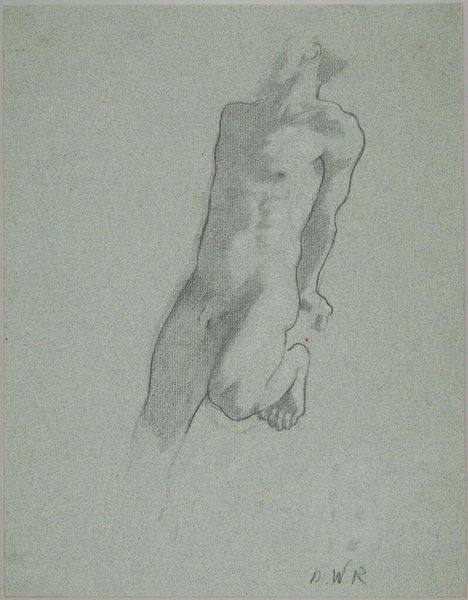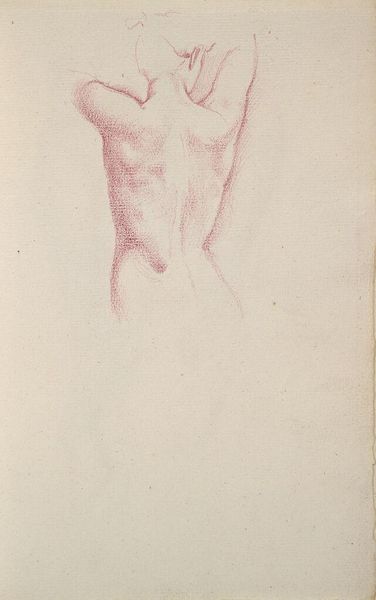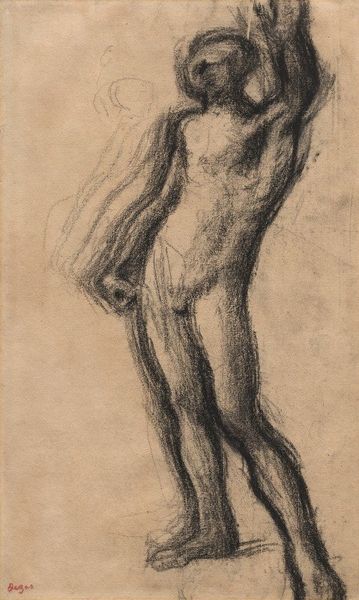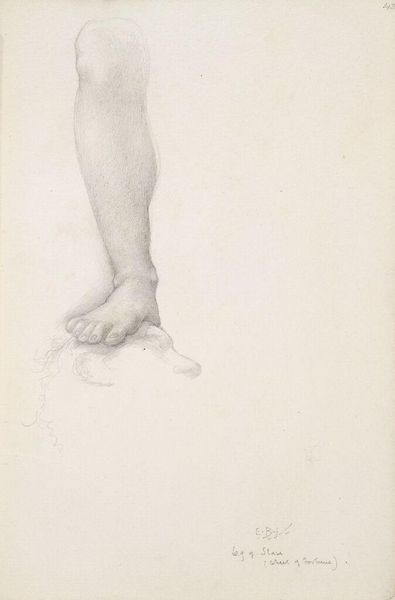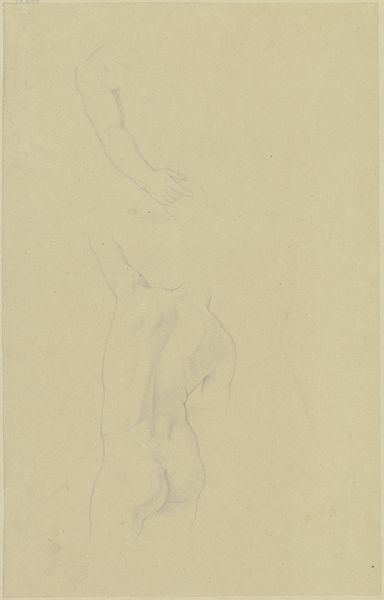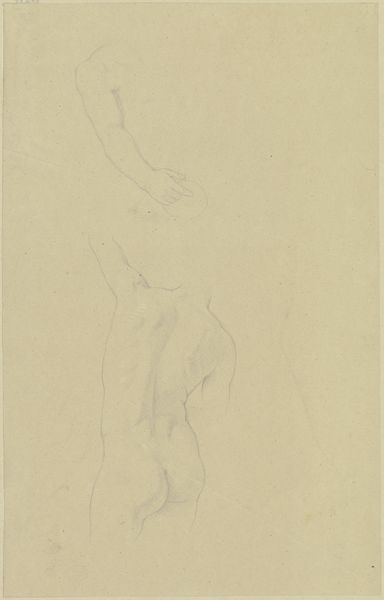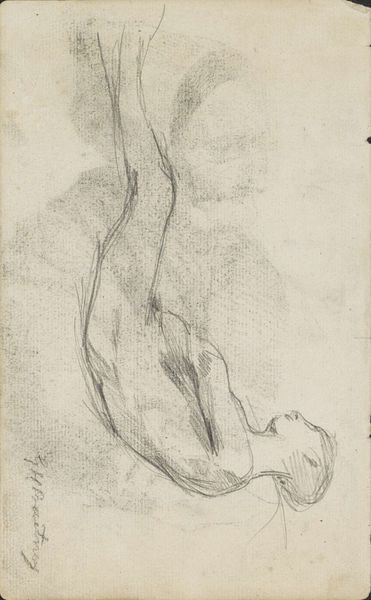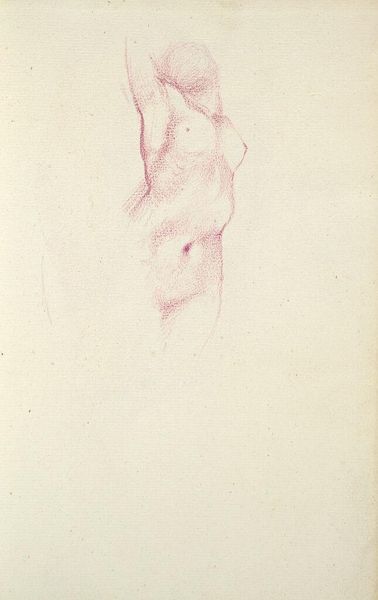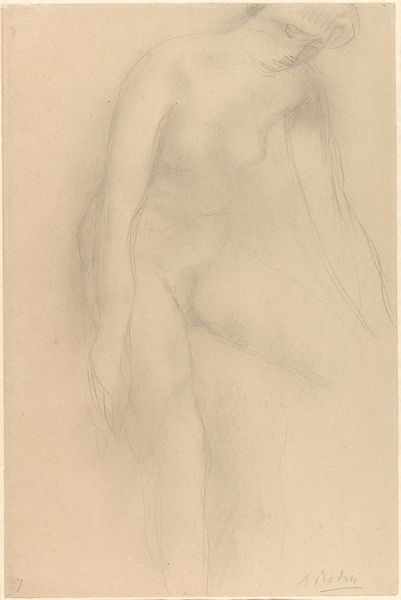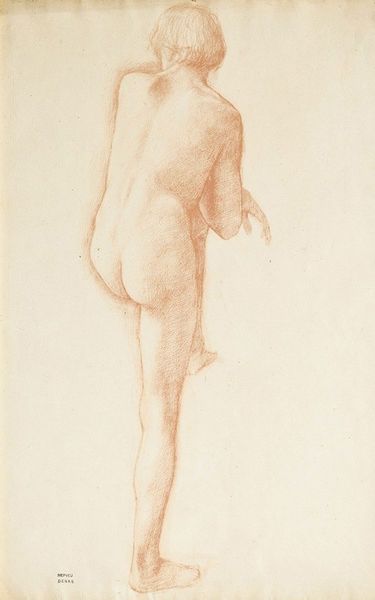
drawing, pencil
#
portrait
#
drawing
#
charcoal drawing
#
figuration
#
pencil drawing
#
pencil
#
portrait drawing
#
pre-raphaelites
Copyright: Public Domain: Artvee
Curator: "Study of a Female Figure," created around 1885 by Edward Burne-Jones. He worked primarily in pencil, and, at first glance, it presents such a fragile beauty. Editor: I see it. It is almost spectral, a haunting beauty really. The delicate lines give it such a dreamlike quality, like she's about to vanish right before your eyes. Curator: Burne-Jones, closely linked to the Pre-Raphaelite movement, sought to revive the artistic styles of the early Renaissance. This drawing definitely echoes that romanticized aesthetic. We see a classical form with an ethereal quality, somewhat detached. Editor: Detached is right. It's in the way she's turning her gaze—looking almost over her shoulder but with an intensity that feels very present. Yet her body seems to recede. Was this perhaps a study for a larger composition? Curator: Possibly, or perhaps it was always intended as a standalone piece. He was very much exploring idealized beauty, often challenging the conventions of Victorian portraiture. Consider her posture and gaze; there's something incredibly vulnerable, yet powerful about her presence. She doesn’t quite meet our gaze. Editor: Yes, it subverts the expected power dynamic between artist and model and viewer, which certainly aligns with the broader social reform agenda during his era. The Pre-Raphaelites often infused their art with symbolic meaning and a critical lens towards industrialization. The sketch certainly offers the possibility of portraying his muse. It is quite unfinished... leaving it very raw, fresh. Curator: Right, there's that refreshing rawness... I wonder if this open-endedness is more engaging, really? That delicate touch seems so immediate and invites you to wonder what this beauty ponders. Editor: It is certainly beautiful to reflect on the cultural moment. Art at this time functioned quite literally to bring aesthetics into domestic interiors, and with art objects the conversation changed around who deserved aesthetic contemplation. But beyond social meaning and power structures, I find beauty in the aesthetic moment, and this really holds it together with this very gentle art language. Curator: It’s incredible to me that, with so few lines, a portrait can carry so much emotional weight. The eyes particularly—they really pull you in. Editor: Indeed. And for all it says about society, sometimes the most potent art speaks directly to the spirit, doesn't it?
Comments
No comments
Be the first to comment and join the conversation on the ultimate creative platform.


